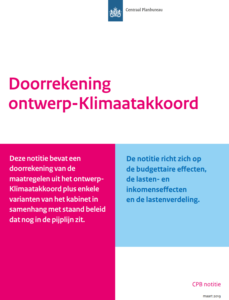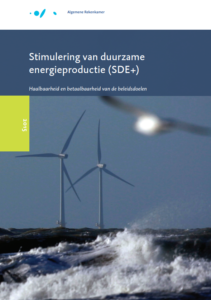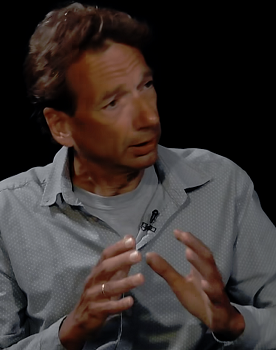The flaws in Dutch climate policy
By Karel Beckman
New reports from government institutions in the Netherlands have been hailed by policymakers and the press as proof that Dutch climate policy is working. Karel Beckman takes a hard look at the facts and sees a different reality. The results fall short, the uncertainties are great. What are the lessons for other countries?
Courtesy Natural Gas World.
This issue of my Gas Transitions blog should be of interest, I hope, to anyone involved in climate and energy policy. I will take a close look this week at climate policy in my home country, the Netherlands, which I believe could well turn out to be a costly failure. Why should the wisdom of Dutch climate policy be of concern to anyone besides Dutch taxpayers? At this moment all developed countries are entering a new phase in their climate policies. They are moving beyond broad reduction targets and temperature goals to the nitty-gritty of real climate measures and tough choices. The debate is not anymore about whether to reduce greenhouse gas emissions, or even by how much, but how.
From this point on there are still many different roads into the future. The Dutch example is instructive because we are talking about a wealthy, urbanised, industrialised country – a self-proclaimed climate leader within the EU. A country moreover that has decided to phase out the use of “unabated” natural gas for the sake of the climate. Yet already its climate policies are throwing up many lessons of how not to go about reducing greenhouse gas emissions.
 What prompted me to tackle the topic was the publication last week, on 13 March, of two major reports by two prominent Dutch government agencies – PBL, the Netherlands Environment Assessment Agency and CPB, the Netherlands Bureau for Economic Policy Analysis. At the behest of the government, they have both analysed the effects of the draft national Climate Accord, which was signed on 21 December 2018 and which may be regarded as the centre piece of Dutch climate and energy policy.
What prompted me to tackle the topic was the publication last week, on 13 March, of two major reports by two prominent Dutch government agencies – PBL, the Netherlands Environment Assessment Agency and CPB, the Netherlands Bureau for Economic Policy Analysis. At the behest of the government, they have both analysed the effects of the draft national Climate Accord, which was signed on 21 December 2018 and which may be regarded as the centre piece of Dutch climate and energy policy.
The Climate Accord, the result of months of negotiations between labour unions, NGOs, business associations, local authorities and other civil society groups, which will serve as the basis for the Dutch National Energy and Climate Plan (NECP) that all EU member states have to submit to the European Commission at the end of this year, contains a large number of more or less concrete proposals to reduce greenhouse gas emissions. PBL and CPB have analysed how effective these proposals are likely to be in terms of emission reductions and have estimated their costs.
 The PBL report and the CPB report are therefore key input in the political decision-making process that will now take place to turn the Climate Accord into legislation.
The PBL report and the CPB report are therefore key input in the political decision-making process that will now take place to turn the Climate Accord into legislation.
What the two reports show – even though their authors don’t say so explicitly and even if the general media did not notice anything amiss – is that Dutch climate policies are full of contradictions, inefficiencies and question marks that should put energy policymakers and stakeholders everywhere on the alert. Here are seven Troubling Takeaways I took from the PBL and CPB reports.
- The cost of climate policies: anyone’s guess
One would think that the cost of climate policy would be a major concern to any society, certainly to the frugal Dutch, yet there almost seems to be a conspiracy going on among the leading political parties and the media not to confront them. This in turn gives (right-wing) opposition parties plenty of ammunition to scare the public about what the real costs might be.
The PBL report concludes that “national costs” – defined as net costs for “society as a whole, regardless of who has to pay for them” – will be between €1.6 and €1.9 billion on an annual basis by 2030. That reassuring figure was quoted widely in the press, but what few people bothered to notice is that these are only the costs of the Climate Accord additional to the costs that would have been incurred if there had been no Climate Accord, in other words, additional to a “reference scenario” (in Dutch “basispad”). That reference scenario, says PBL, is described in another PBL publication, called Nationale Energieverkenning 2017 (not available in English, unfortunately, but which can be translated as National Energy Exploration 2017). The problem is that this report does not mention any costs.
PBL did publish a report in April 2017, and an update in April 2018, about the “National costs of the climate and energy transition”. The first mentions costs of €3.5 to €5.5 billon a year, the second “over €3 billion a year”, but again those are costs additional to the costs in the Nationale Energieverkenning 2017, which are not known.
Robert Koelemeijer, researcher at PBL and one of the authors of the new report, says in a telephone interview: “It has proved to be very difficult to distinguish between the costs of the energy system as such and additional costs as a result of past climate and energy policies. But it is a question we get more often and that we do want to take a look at this year.”
 Earlier this year, a group of critics – Theo Wolters, Stijn Santen, Hans Keuken, Evert van der Pol and Marcel Crok – published a report, “De kosten van het Energieakkoord” (“The costs of the Energy Accord”), which attempts to calculate the costs of the measures decided on in an earlier piece of climate legislation, called the Energy Accord, in 2013. Wolters, one of the authors, tells me it is reasonable to assume that this Energy Accord, which was actually adopted by the government and is being implemented, represents the major part of the “reference scenario” that PBL refers to.
Earlier this year, a group of critics – Theo Wolters, Stijn Santen, Hans Keuken, Evert van der Pol and Marcel Crok – published a report, “De kosten van het Energieakkoord” (“The costs of the Energy Accord”), which attempts to calculate the costs of the measures decided on in an earlier piece of climate legislation, called the Energy Accord, in 2013. Wolters, one of the authors, tells me it is reasonable to assume that this Energy Accord, which was actually adopted by the government and is being implemented, represents the major part of the “reference scenario” that PBL refers to.
 According to Wolters c.s., the Energy Accord will cost Dutch society over €100 billion, measured over a period of 35 years, to which the costs of the Climate Accord must now be added. Their report has been criticised by various experts. Koelemeijer says: “There are some aspects about it that we don’t agree with. We are planning to analyse it in more detail.”
According to Wolters c.s., the Energy Accord will cost Dutch society over €100 billion, measured over a period of 35 years, to which the costs of the Climate Accord must now be added. Their report has been criticised by various experts. Koelemeijer says: “There are some aspects about it that we don’t agree with. We are planning to analyse it in more detail.”
On the other hand, the number of €100 billion, over 35 years, does not seem so incredible. Thus, for example, the Dutch General Accounting Office (“Algemene Rekenkamer”), again an official government institution, calculated in April 2015 that the costs of renewable energy subsidies alone could amount to some €80 billion by 2030. (You can find the GAO report by following this link, click on the download, see page 15-16. Again, all in Dutch, I’m afraid.) Renewable energy subsidies are of course only part of the total costs of climate policy – according to the critics roughly half of the total.
Note, incidentally, that the figure of €1.6-€1.9 billion does not tell the whole story, since PBL has excluded the costs of measures in the Climate Accord that are “insufficiently concrete” at this point and about many other measures PL notes there are “uncertainties” in how they will be effectuated. Koelemeijer, however, says this does will not impact the final outcome materially.
- The poor pay
Unlike the PBL report, which looks at “national costs”, the CPB report investigates what financial “burdens” climate policies will put on households and companies. The CPB estimates do refer to total costs of climate policies, i.e. not just the policies in the Climate Accord, but also existing policies. It estimates (see p. 5) total financial burdens of €6.8 billion per year of which the Climate Accord contributes only €1.6 billion.
However, this figure, notes CPB (on p. 22) does not include the cost of investments needed to bring down emission reductions from energy use in houses nor from investments needed to reduce emissions from mobility. This means that, for example, costs incurred to disconnect houses from the gas grid and install heat pumps, or to buy an electric car, are not included in the figures. Costs could also go down, however, if people adjust their behaviour, CPB notes.
More importantly perhaps is that CPB concludes that lower income groups (especially lower middle income groups) have to pay relatively more as a result of current climate policies than higher income groups. Welfare recipients and pensioners, says CPB, are hit hardest of all.
On average, households will see their income reduced by 1.3% as a result of all climate measures together, notes CPB, ranging from 0.8% for the highest income groups to 1.8% for the lowest income groups. To this should be added another 0.4% income loss on average as a result of climate policies in other EU countries and of companies charging their climate costs to consumers.
- The built environment: minimal results
One of the most complex and controversial elements in Dutch climate policy is the goal to disconnect all houses and buildings from the gas grid by 2050. Currently 98% of all buildings are connected to the gas grid. The Climate Accord envisions that roughly half of the houses will be connected to a district heating network fed with industrial waste heat, geothermal energy or perhaps hydrogen, and the other half will opt for a combination of insulation and electric heat pumps to replace natural gas. A third option is hybrid heat pumps, that is to say, an electric heat pump combined with a gas-fired boiler that would be using biogas or possibly green hydrogen.
Of the more than 7 million buildings that will be affected, 1.5 million should be “off gas” by 2030, according to the Climate Accord. As noted above, CPB does not calculate the costs of this gigantic operation. PBL does. The PBL report concludes (on p. 67) that with the measures in the Climate Accord some 250,000 to 1,070,000 buildings could be made “gas-free” (rather than 1.5 million). The net “national costs” of this operation would only be €75 to €90 million, according to PB.
This is an extremely low number (less than €90 per building), which PBL explains with the argument that “the costs of investment will be mostly compensated by savings on natural gas use.” In addition, Koelemeijer points out the number does not include the cost of building new district heating networks.
Theo Wolters, one of the authors of the critical report, notes that according to a 2018 study of the independent think tank EIB (“Economisch Instituut voor de Bouw” – Economic Institute for the Building Sector), the average cost of going off gas will be €32,638 per house. This will save on average €623 per year in costs for gas use, not even enough to pay the interest on the investment, says Wolters. “The costs for the adaptation of 100,000 buildings a year would be over €3 billion in the year 2030 alone.”
What I find more dramatic, however, is that the PBL study shows that the measures taken in the built environment do only very little to reduce CO2 emissions. The Climate Accord is split up into five sectors: electricity generation, industry, transport, agriculture and environment. If it is carried out, PBL calculates, total emissions will go down between 31 and 52 Mt (megatonnes). Of this total, the electricity sector will contribute 18.3-21.0 Mt, industry between 6 and 13.9 Mt, mobility 4.2-8.0 Mt, agriculture 1.8-4.6 Mt and the built environment a paltry 0.8-3.7 Mt.
In other words, the Netherlands is contemplating a complete and costly overhaul of the existing building stock with a rather small effect on its greenhouse gas emissions.
- Waterbed effects: what goes down, must come up
In the executive summary of its report, PBL drily notes (on p. 12) that “interactions with international policy could partly cancel out the effects [i.e. the emission reductions in the Climate Accord].”
This caveat has received scant attention in the press or in parliament. Yet its implications are rather shocking.
According to Koelemeijer, the effects of emission reductions in industry (6-14 Mton) and in electricity generation (18-21 Mton in the Netherlands) all fall within the EU Emission Trading System (ETS) and run the risk of being cancelled out by the waterbed effect in the ETS. That’s more than half of total emission reductions achieved by the Climate Accord (31-52 Mt).
And that’s not all. Similar “waterbed effects” occur in transport and agriculture, notes PBL, but they are not quantified in the report as far as I am able to tell. In transport, for example, PBL notes that an increase in EVs in the Netherlands can make it possible for European carmakers to sell fewer low-emission vehicles in other EU countries, since the carmakers have to meet EU-wide targets.
Wolters and his co-authors, in their critical report, provide a withering analysis of the waterbed effects of Dutch climate policy. They calculate that of 32 Mt of emission reductions which the Netherlands wants to achieve by 2020, 79% falls under the ETS system. The non-ETS part is virtually entirely based on the use of biomass, a questionable method (see below). Just 0.6 Mt of the 32 Mt falls outside of the ETS and is not related to biomass.
Wolters notes that CPB and the University of Groningen have long ago warned about the waterbed effect of the ETS, with the recommendation to “put off building expensive offshore wind parks in the North Sea” as long as their emission reductions would benefit coal power producers in Poland and elsewhere. “The same ton of CO2 that we don’t emit from a clean gas power plant by replacing it with wind turbines and which costs us on average €88, can be bought by a polluting coal power producer in Eastern Europe for €5 to €25”, they write.
Koelemeijer of PBL says waterbed effects deserve attention, but he does point out that it is not certain how they will work out. “There is a risk that some of the emission reductions achieved in the Netherlands lead to higher emissions elsewhere in the EU, but it is not necessarily the case for all of the reductions at risk. The EU also takes measures, such as the adoption of the market stability reserve, that counteract the waterbed effects.”
- Biomass: what is it good for?
Neither the CPB nor the PBL report quantifies the contribution or the costs of biomass to Dutch emission reductions.
However, the above-mentioned critical report by Wolters c.s. has an interesting table showing the costs of various climate measures as decided in the 2013 Energy Accord:
Onshore wind 11.6
Offshore wind 12
Utility-scale solar 0.785
Solar PV 7.9
Geothermal 1
Biomass for power production 18.2
Biomass for heat 4.6
Biomass for transport 6.3
Clean transport 7.6
Expansion electricity network 19.1
Energy savings 15.6
Other 2.5
Total 107.2
(Costs in billions of euros. Source: Kosten van het Energieakkoord, p. 18)
This table shows that biomass is the single most expensive measure – yet as PBL itself notes, its effectiveness is surrounded by “many uncertainties”.
By the way, in the Netherlands burning of wood in wood stoves and fireplaces also counts as “renewable energy”. The Netherlands has a 14% renewable energy target for 2020, of which almost 1 percentage point will be reached by people using their wood stoves and fireplaces!
- Jobs: no effect
Renewable energy is often credited for providing jobs – a questionable defense in itself, since “providing jobs” is not the same thing as contributing to economic growth. On the contrary, if switching to renewable energy leads to many more people being employed in energy generation, without producing more energy than before, this is a net economic loss to society, not a gain.
But not to worry: CPB concludes (on p. 11) that climate and energy policy in the Netherlands has “transition effects”, but “in the longer term net effects on employment are marginal”. The renewable energy job machine simply does not exist.
- In the end: coming up short
After all is said and done, and ignoring waterbed effects, biomass doubts and the like, what is also striking is that the measures in the Climate Accord don’t even deliver the official target of 48.7 Mt of reductions in 2030. PBL concludes (p. 9) that if all the proposed measures are carried out, emissions will be reduced by between 31 and 52 Mt, adding that “the target of 48.7 Mt will most likely not be met”.
Indeed, there are other “uncertainties” which could even result in emission reductions outside of the 31-52 Mt range, notes PBL, for example, unexpected deviations in “economic growth, energy prices, technology developments and developments in other countries”.
Conclusions
What conclusions can we draw from all this? The most important one I think is that climate policy – any climate policy – is not a done deal. On the contrary, the real hard choices have only just arrived on our doorstep. There are many questions still to be answered about what are the most cost-effective and efficient measures. Not only in the Netherlands – other countries will face the same issues.
Nor is the role of natural gas in a climate neutral economy a foregone conclusion. The PBL report concludes for example that the Dutch Climate Accord will lead to carbon capture and storage (CCS) contributing 4 to 10 Mt of emission reductions out of the total 31-52 Mt in 2030. That’s more than the entire transport sector or the entire agricultural sector and significantly more than all the measures in the built environment put together. CCS is foreseen in particular in combination with natural gas to make so-called “blue” hydrogen.
And there are measures that are currently not even part of the official debate, such as nuclear energy, which could still enter into the picture when the full implications of climate policy become clear, as will inevitably be the case, whether established political parties like it or not.
Two key issues that need to receive a lot more attention are the effects of EU climate policy, which right now are an afterthought in the Netherlands and in other EU member states, whereas they clearly should be a starting point, and the wisdom of using renewable energy targets alongside of CO2-targets. Wolters and the other critics of Dutch climate policy observe that the Dutch government initially wisely focused on CO2-targets, but then enthusiastically endorsed a new renewable energy target agreed upon by the EU of 32% in 2030. This, they say, means that CO2-reduction will be achieved “through relatively expensive options”.
The climate policy debate? It has only just started.
This article was first published in Natural Gas World and is republished here with permission from the author.
